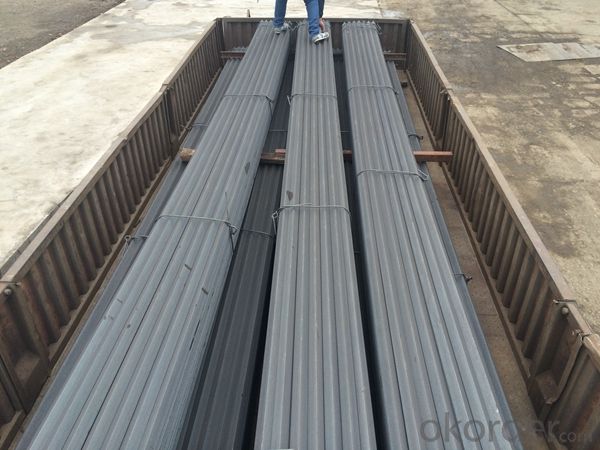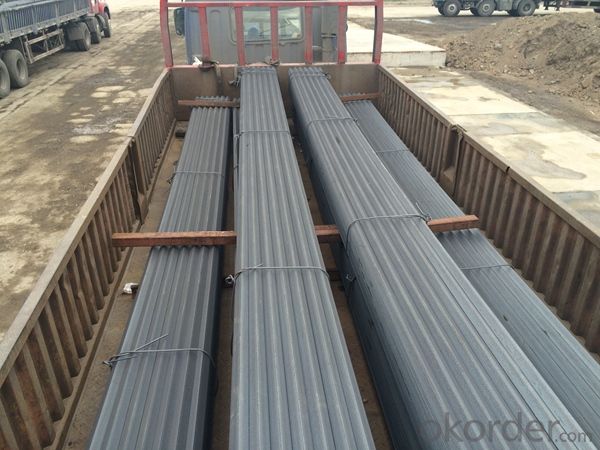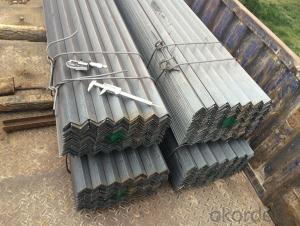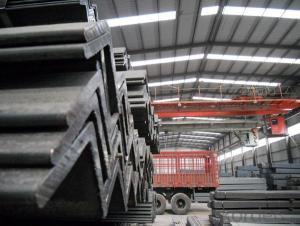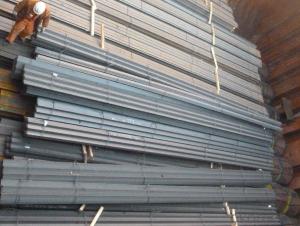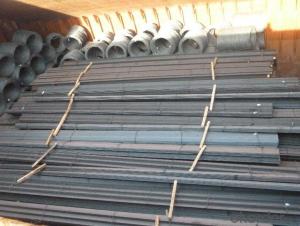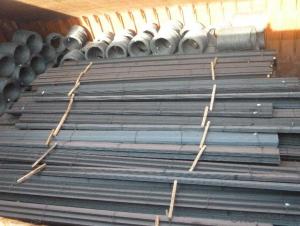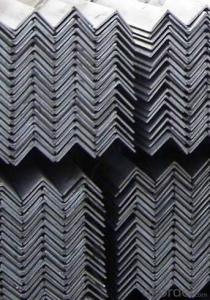Hot Rolled JIS Standard Equal Angle Steel Bars for Construction, Structu
- Loading Port:
- Tianjin
- Payment Terms:
- TT OR LC
- Min Order Qty:
- 25 m.t.
- Supply Capability:
- 200000 m.t./month
OKorder Service Pledge
OKorder Financial Service
You Might Also Like
Product Description:
OKorder is offering Hot Rolled JIS Standard Equal Angle Steel Bars for Construction, Structure at great prices with worldwide shipping. Our supplier is a world-class manufacturer of steel, with our products utilized the world over. OKorder annually supplies products to European, North American and Asian markets. We provide quotations within 24 hours of receiving an inquiry and guarantee competitive prices.
Product Applications:
Hot Rolled JIS Standard Equal Angle Steel Bars for Construction, Structure are ideal for structural applications and are widely used in the construction of buildings and bridges, and the manufacturing, petrochemical, and transportation industries.
1. Supporting members, most commonly in the house raising industry to strengthen timber bears under houses. Transmission line towers, etc
2. Prefabricated structure
3. Medium scale bridges
4. It is widely used in various building structures and engineering structures such as roof beams, bridges, transmission towers, hoisting machinery and transport machinery, ships, industrial furnaces, reaction tower, container frame and warehouse etc.
Product Advantages:
Hot Rolled JIS Standard Equal Angle Steel Bars for Construction, Structure are durable, strong, and resist corrosion.
Main Product Features:
· Premium quality
· Prompt delivery & seaworthy packing (30 days after receiving deposit)
· Corrosion resistance
· Can be recycled and reused
· Mill test certification
· Professional Service
· Competitive pricing
Product Specifications:
.Standards:GB,ASTM,BS,AISI,DIN,JIS
2.Invoicing on theoretical weight or actual weight as customer request
3.Material: JIS G3192,SS400;SS540.
4. Payment terms:
1).100% irrevocable L/C at sight.
2).30% T/T prepaid and the balance against the copy of B/L.
3).30% T/T prepaid and the balance against L/C
5.Sizes:
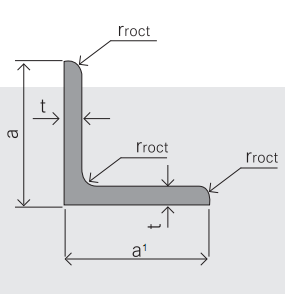
EQUAL ANGLES SIZES | |||
a(mm) | a1(mm) | thickness(mm) | length |
25 | 25 | 2.5---3.0 | 6M/12M |
30 | 30 | 2.5---4.0 | 6M/12M |
38 | 38 | 2.5 | 6M/12M |
38 | 38 | 3.0---5.0 | 6M/12M |
40 | 40 | 3.0---6.0 | 6M/12M |
50 | 50 | 3 | 6M/12M |
50 | 50 | 3.7---6.0 | 6M/9M/12M |
60 | 60 | 5.0---6.0 | 6M/9M/12M |
63 | 63 | 6.0---8.0 | 6M/9M/12M |
65 | 65 | 5.0---8.0 | 6M/9M/12M |
70 | 70 | 6.0---7.0 | 6M/9M/12M |
75 | 75 | 5.0---10.0 | 6M/9M/12M |
80 | 80 | 6.0---10.0 | 6M/9M/12M |
90 | 90 | 6.0---10.0 | 6M/9M/12M |
100 | 100 | 6.0---12.0 | 6M/9M/12M |
120 | 120 | 8.0-12.0 | 6M/9M/12M |
125 | 125 | 8.0---12.0 | 6M/9M/12M |
130 | 130 | 9.0-12.0 | 6M/9M/12M |
140 | 140 | 10.0-16.0 | 6M/9M/12M |
150 | 150 | 10---15 | 6M/9M/12M |
160 | 160 | 10---16 | 6M/9M/12M |
180 | 180 | 12---18 | 6M/9M/12M |
200 | 200 | 14---20 | 6M/9M/12M |
5. Material Specifications:
Grade | Yield Strength,N/mm² | Extension Strength N/mm² | |||
Thickness of Steel,mm | |||||
≦16 | >16-≦40 | >40-≦100 | >100 | ||
SS330 | ≧205 | ≧195 | ≧175 | ≧165 | 330-430 |
SS400 | ≧245 | ≧235 | ≧215 | ≧205 | 400-510 |
SS490 | ≧285 | ≧275 | ≧255 | ≧245 | 490-610 |
SS540 | ≧400 | ≧390 | - | - | ≧540 |
FAQ:
Q1: Why buy Materials & Equipment from OKorder.com?
A1: All products offered byOKorder.com are carefully selected from China's most reliable manufacturing enterprises. Through its ISO certifications, OKorder.com adheres to the highest standards and a commitment to supply chain safety and customer satisfaction.
Q2: How do we guarantee the quality of our products?
A2: We have established an advanced quality management system which conducts strict quality tests at every step, from raw materials to the final product. At the same time, we provide extensive follow-up service assurances as required.
Q3: How soon can we receive the product after purchase?
A3: Within three days of placing an order, we will begin production. The specific shipping date is dependent upon international and government factors, but is typically 7 to 10 workdays.
Q4: What makes stainless steel stainless?
A4: Stainless steel must contain at least 10.5 % chromium. It is this element that reacts with the oxygen in the air to form a complex chrome-oxide surface layer that is invisible but strong enough to prevent further oxygen from "staining" (rusting) the surface. Higher levels of chromium and the addition of other alloying elements such as nickel and molybdenum enhance this surface layer and improve the corrosion resistance of the stainless material.
Q5: Can stainless steel rust?
A5: Stainless does not "rust" as you think of regular steel rusting with a red oxide on the surface that flakes off. If you see red rust it is probably due to some iron particles that have contaminated the surface of the stainless steel and it is these iron particles that are rusting. Look at the source of the rusting and see if you can remove it from the surface.
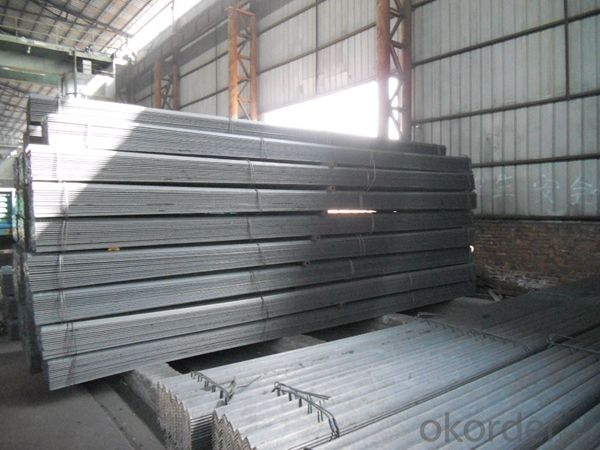
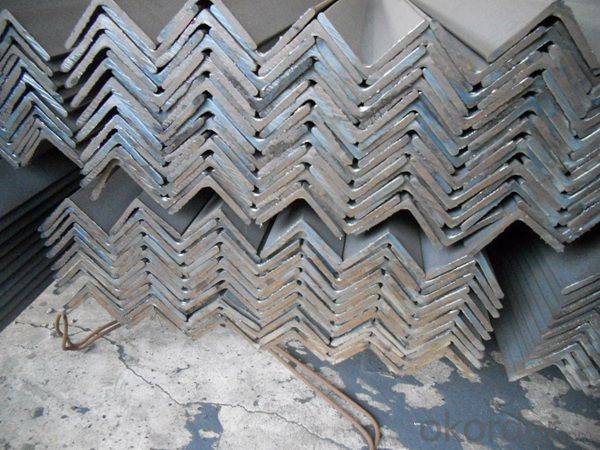
- Q: How do steel angles contribute to the overall torsional stiffness of a structure?
- Steel angles can contribute to the overall torsional stiffness of a structure in several ways. Firstly, steel angles have a high moment of inertia, which means they are resistant to bending. This resistance to bending helps to distribute and resist the torsional forces acting on the structure, reducing any twisting or warping that may occur. Secondly, steel angles can be strategically placed and connected in a structure to form bracing or reinforcement systems. These systems help to transfer and distribute torsional forces throughout the structure, preventing localized areas from experiencing excessive twisting or distortion. Furthermore, steel angles can be used to create rigid connections between different structural members, such as beams or columns. These connections enhance the overall stiffness of the structure by effectively transmitting torsional forces between the connected members, minimizing any relative movement or deformation. Moreover, steel angles can also be utilized as diagonal members in truss structures or frames. By introducing diagonals, the angles help to resist and distribute torsional forces, maintaining the overall stability and rigidity of the structure. Overall, steel angles play a crucial role in enhancing the torsional stiffness of a structure by providing resistance to bending, forming bracing or reinforcement systems, creating rigid connections, and acting as diagonal members. By effectively managing and distributing torsional forces, steel angles contribute to the overall stability, durability, and performance of the structure.
- Q: What are the considerations for selecting the appropriate steel angle finish?
- Several factors need to be taken into account when choosing the right steel angle finish. Firstly, the intended use or application of the steel angle is a primary consideration. Different finishes offer varying levels of corrosion resistance, which is crucial in environments with moisture or chemicals. For outdoor applications or high humidity environments, a hot-dip galvanized finish is often preferred due to its excellent corrosion resistance. Conversely, a plain steel finish may suffice for indoor applications where corrosion resistance is not a major concern. The desired aesthetic appearance is another consideration. Steel angles can be finished in different ways to achieve various looks. A mill finish provides a raw, industrial appearance, while a powder coat finish offers a polished look and a wide range of color options. The choice of finish depends on the desired aesthetic effect and the overall project design. Durability is also an important factor to consider. Finishes like zinc plating or stainless steel offer enhanced durability and resistance to wear and tear, making them suitable for heavy-duty applications or high-traffic areas. On the other hand, a painted finish may be more prone to chipping or scratching, making it less suitable for long-term durability requirements. Lastly, cost plays a significant role in the decision-making process. Different finishes have varying costs associated with them, so it is necessary to balance the desired finish with the available budget. It is worth noting that while certain finishes may have a higher upfront cost, they may provide long-term cost savings by reducing maintenance or replacement needs. To summarize, the appropriate steel angle finish selection depends on factors such as corrosion resistance, aesthetic appearance, durability requirements, and budget considerations. By carefully evaluating these factors, one can choose the most suitable finish that meets both functional and aesthetic needs.
- Q: Can steel angles be used in mining or quarrying machinery?
- Steel angles are indeed applicable in mining or quarrying machinery. They offer structural support and reinforcement to different machinery components used in these sectors. Frames, supports, and brackets for equipment like crushers, conveyors, and screens are often constructed using steel angles. Due to their high strength and durability, steel angles can withstand the heavy loads, vibrations, and harsh operating conditions commonly experienced in mining or quarrying operations. Moreover, steel angles can be easily fabricated and welded to meet specific design needs, making them a flexible option for machinery applications in these industries.
- Q: What is the weight of a standard steel angle?
- The weight of a standard steel angle can vary depending on its size and thickness. However, in general, a standard steel angle weighs approximately 2.5 pounds per foot (or 3.3 kilograms per meter). This weight is based on a standard steel angle with equal legs and a thickness of 1/4 inch (or 6.35 millimeters). It is important to note that the weight may differ slightly based on the specific dimensions and specifications of the steel angle being used.
- Q: What is the maximum cantilever length for a steel angle?
- The maximum cantilever length for a steel angle will depend on various factors such as the angle's dimensions, material strength, and the applied load. Without specific details, it is challenging to provide an exact maximum cantilever length. However, engineers typically refer to design codes and structural guidelines to determine the safe cantilever length for a specific steel angle in a given application.
- Q: Can steel angles be used in the construction of hotels?
- Indeed, hotels can incorporate steel angles into their construction. Owing to their exceptional durability, strength, and adaptability, steel angles are frequently utilized in the field of construction. These versatile components serve various functions within hotel construction, including bolstering structural beams, fortifying concrete slabs, framing walls, and crafting architectural elements. By offering stability and structural integrity, steel angles prove to be excellent candidates for constructing towering hotels. Furthermore, their affordability and widespread availability render them a pragmatic option for hotel construction endeavors.
- Q: Can steel angles be used in the construction of oil refineries?
- Indeed, the utilization of steel angles is feasible in the building of oil refineries. Owing to their exceptional robustness and endurance, steel angles are widely employed in construction ventures. They serve as valuable sources of structural reinforcement and are adaptable for a multitude of purposes, including oil refinery construction. By employing angles, it becomes possible to fabricate frameworks, supports, and bracing for diverse refinery components and equipment. The angles offer vital stability and resistance against substantial burdens and challenging environments, both of which are crucial within the oil refining sector. Furthermore, steel angles can be conveniently welded, bolted, or interconnected with other steel elements, rendering them a highly versatile option for refinery construction.
- Q: Can steel angles be used for sign supports?
- Yes, steel angles can be used for sign supports. Steel angles are commonly used in construction and structural applications, including supporting signs. They provide strength, stability, and durability, making them suitable for the purpose of sign support.
- Q: What are the different types of steel angles used in architectural applications?
- Architectural applications commonly utilize various types of steel angles. One example is the equal leg angle, also referred to as an L-shaped angle or L-bar. With legs of equal length forming a 90-degree angle, this angle is suitable for framing, bracing, and support. Another type is the unequal leg angle, also known as an L-shaped angle or L-bar with unequal legs. This angle accommodates versatile applications where different lengths are necessary, serving purposes such as edging, corner protection, and decorative accents. A third steel angle used in architectural applications is the bent angle. Achieved by bending a piece of flat steel to the desired angle, this type is often employed in architectural designs to create curved or unique-shaped structures. Such angles enhance aesthetics and add visual interest. Lastly, the perforated angle features holes punched along its length. This type finds widespread use in architectural applications requiring ventilation, drainage, or lightweight structural support. The perforations allow for airflow, water drainage, and the attachment of supplementary components. In conclusion, the assortment of steel angles available for architectural applications grants architects and designers a plethora of options to cater to specific project requirements. Whether prioritizing structural stability, aesthetic design, or functional purposes, these angles provide solutions that meet diverse needs.
- Q: What are the different types of steel angles used in automotive engineering?
- In automotive engineering, there are several types of steel angles that are commonly used. These angles play a crucial role in providing structural strength, improving stability, and enhancing the overall performance and safety of vehicles. Here are some of the different types of steel angles used in automotive engineering: 1. L-angles: L-angles, also known as unequal angles, are often used in automotive engineering to provide structural support and reinforcement. These angles have different lengths on each side, allowing them to be easily welded or bolted onto various components of a vehicle's chassis or frame. 2. T-angles: T-angles, also known as tee angles, are frequently used in automotive engineering to join two components together at a right angle. These angles are designed with a flat base and a vertical stem, which enables them to provide stability and hold different parts of a vehicle securely in place. 3. C-angles: C-angles, also known as channel angles, are commonly utilized in automotive engineering to form the framework for various vehicle structures. These angles have a U-shaped cross-section and are often used to create structural components like door frames, roof rails, and chassis reinforcements. 4. Z-angles: Z-angles, also known as Z-bar angles, are widely employed in automotive engineering to provide strength and rigidity to different vehicle structures. These angles have a Z-shaped cross-section, which allows them to resist bending and torsional forces effectively. Z-angles are often used in applications such as suspension systems, roll bars, and body components. 5. U-angles: U-angles, also known as U-bar angles, are commonly used in automotive engineering to provide support and reinforcement to various vehicle components. These angles have a U-shaped cross-section and are frequently utilized to create structural members like bumper beams, frame reinforcements, and roll cage bars. These are just a few examples of the different types of steel angles used in automotive engineering. Each angle has its own unique properties and applications, and their selection depends on the specific requirements of the vehicle design and the desired structural integrity.
Send your message to us
Hot Rolled JIS Standard Equal Angle Steel Bars for Construction, Structu
- Loading Port:
- Tianjin
- Payment Terms:
- TT OR LC
- Min Order Qty:
- 25 m.t.
- Supply Capability:
- 200000 m.t./month
OKorder Service Pledge
OKorder Financial Service
Similar products
Hot products
Hot Searches




